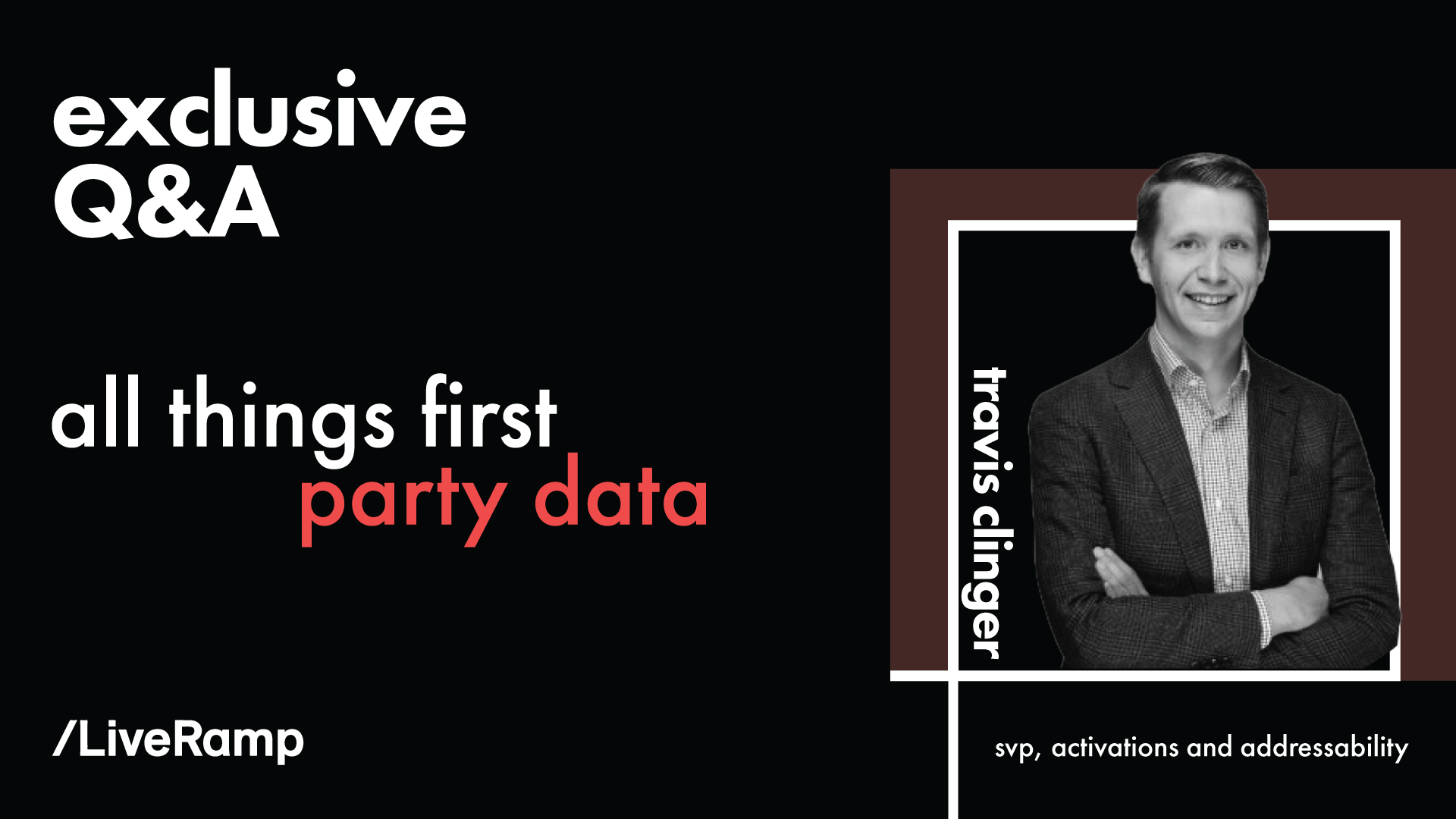Travis Clinger, the SVP of Activations and Addressability from LiveRamp is currently visiting Australia – so we took the opportunity to ask him a few questions about first party data, responsible addressability and Retail Media Networks.
What are the opportunities that can result from establishing solid first-party data foundations and the associated capabilities that are enabled as a result?
First-party data is the baseline to understanding and connecting with your customers – and like a baseline, numerous opportunities follow, once this is in place.
When combined with an identity solution that allows you to unify and consolidate your customer view, first-party data can power a single view of your customers, and their journey engaging with your company. Once this omni-channel view is established, you can then activate on this data and target ads, better engage with people at the right moments and in the right mediums, and easily test and iterate across channels to create campaigns that perform better.
First-party data also enables optimizations like audience suppression, since you’ll have a better sense of who’s recently engaged with your ads or converted, as well as lookalike modeling, since you’ll be able to leverage a clear picture of new customers who behave and look like your current, high-value customers.
Almost a year ago, we announced that we were seeing 7 million Australian individuals per month authenticating with our cookieless identity solution – this means people who were authenticating on publishers, enabling better addressability and measurement. This is and was a great milestone for the market, but there’s a lot of potential for growth – not just on the publisher side, but the marketer side as well. We frequently talk about the need for publishers to authenticate, but marketers also need to collect first-party data and provide consumers a powerful value exchange to share their data. For publishers, that value exchange is often content. For marketers, it can be a newsletter, a discount code, a rewards program, text messages about the latest sale, and so much more. Finally, collecting first-party data is just the first step, it’s then unifying that data together and leveraging to personalize the consumer journey. There’s many brands and pubs that have first-party data, but then are not using it to its fullest capacity.
The same is true of retail media networks, and other advanced marketing. We see, and are working with, most if not all of Australia’s leaders when it comes to these future-forward solutions, but we know there’s lots of room for growth.
Do you have any favourite examples of a genuinely forward-thinking Retail media network from another market?
One of my favourite partners is Boots, who we work with primarily in the UK. Boots came to us with first-party data accumulated via their loyalty card that they wanted to leverage. Over the course of our relationship with them, we’ve grown to help them prepare for a cookieless world with our authenticated traffic solution, while also helping to power their retail media platform where they collaborate with their partners.
Boots was able to create tremendous value from its considerable first-party data, with more than 14 million members of its loyalty card program, but has progressed to building a very powerful, and valuable network, with Boots positioned directly at the center. At the same time, Boots and its partners are well-positioned as the market shifts away from third-party cookies, mobile IDs, IP addresses, and other identifiers.
Do you have an opinion on the proposed Seller Defined Audience standards from IAB Tech Lab?
It’s critical to recognize that there is no silver bullet to the signal loss the industry is facing – we believe authenticated identity is the gold standard, but contextual and anonymous first-party audiences also play a key role. We’re hopeful that Seller Defined Audience standards can be a complementary part of the digital advertising landscape moving forward. Seller Defined Audience standards will have the power to serve as a valuable intelligence layer for publishers and marketers, but we believe it will be most powerful when paired with marketer data in order to effectively monetize inventory.
By definition, first-party data is collected from your customers, with their explicit permission. People exchange their information with companies and know what’s in it for them.
As long as companies are committed to using this first-party data they collect in ethical and appropriate ways – not only within the confines of the law, but also with foresight that goes beyond compliance with legal or regulatory guidelines – then they will be well-situated for building enduring, loyal customer relationships that will stand the test of time as regulatory bodies and tech leaders begin to pay more attention in this space. Companies should embrace the regulatory and privacy changes we’ve seen and focus on solutions that restore consumers’ trust.
With the macroeconomic headwinds we’re now seeing globally, are you worried that businesses are pausing digital transformation projects and/or putting on hold the testing of future proofed responsible addressability solutions?
We think it will actually be the opposite – history has shown that recessions drive more accountable advertising and accountability is inherently linked to addressability. It may be tempting for publishers and brands to put addressability on hold, especially given the macroeconomic climate, but delaying only means cheating yourself out of better performance. 50% of the internet today is cookieless.
Shifting to addressable solutions enables you to benefit from the scale of third-party cookies while they still exist, while also reaching consumers in already-cookieless environments. Further, every addressable impression is a measurable impression and can be linked to real world events, like in-store transactions. For example, shifting to LiveRamp’s solutions offers a 340% boost in ROI over a three-year span, relative to using third-party cookies.
